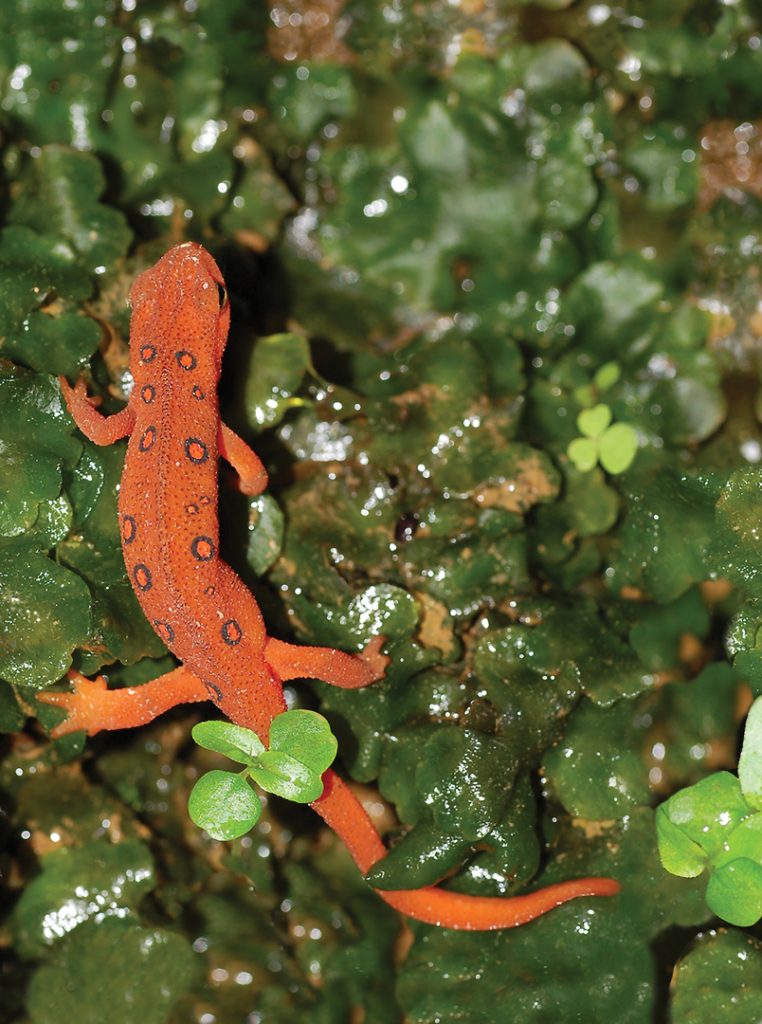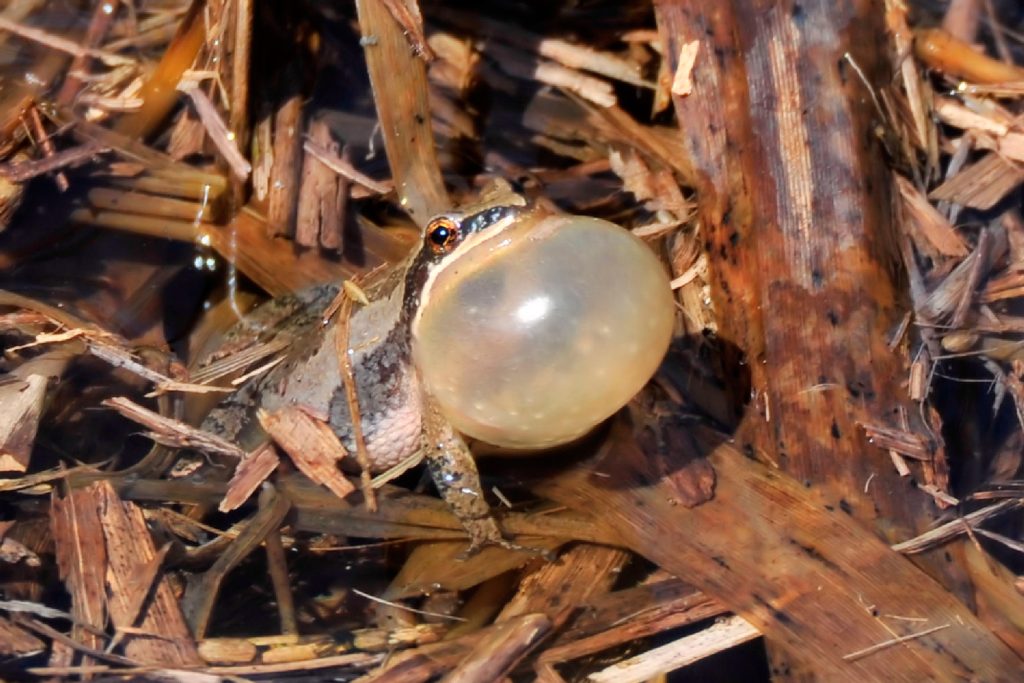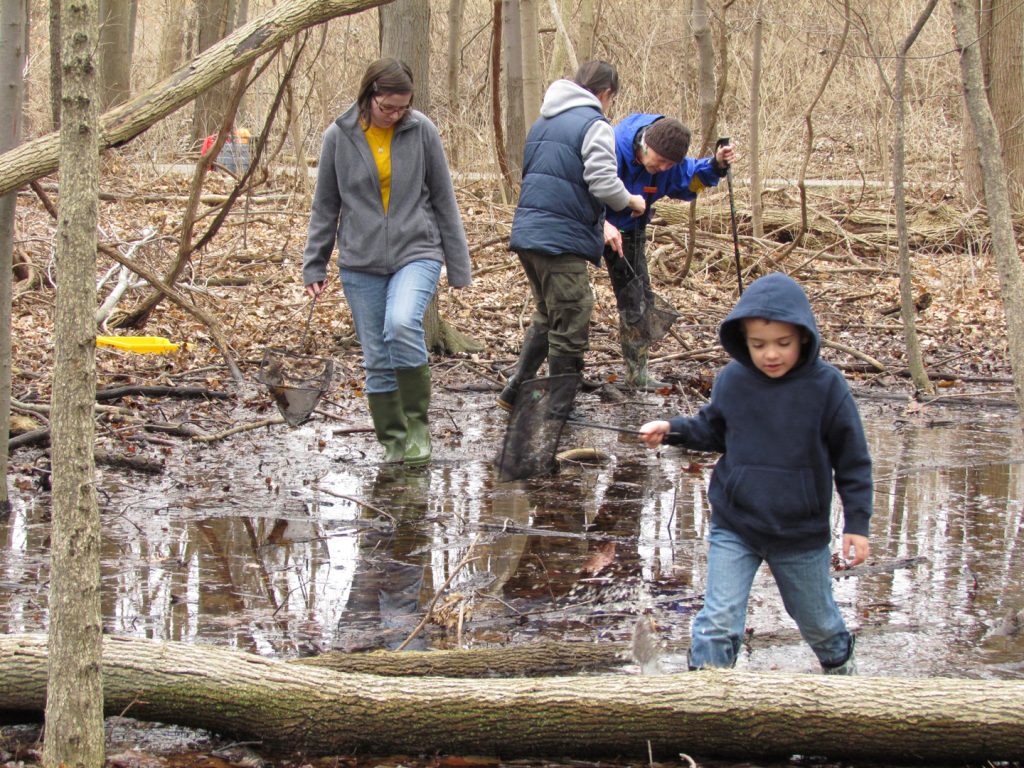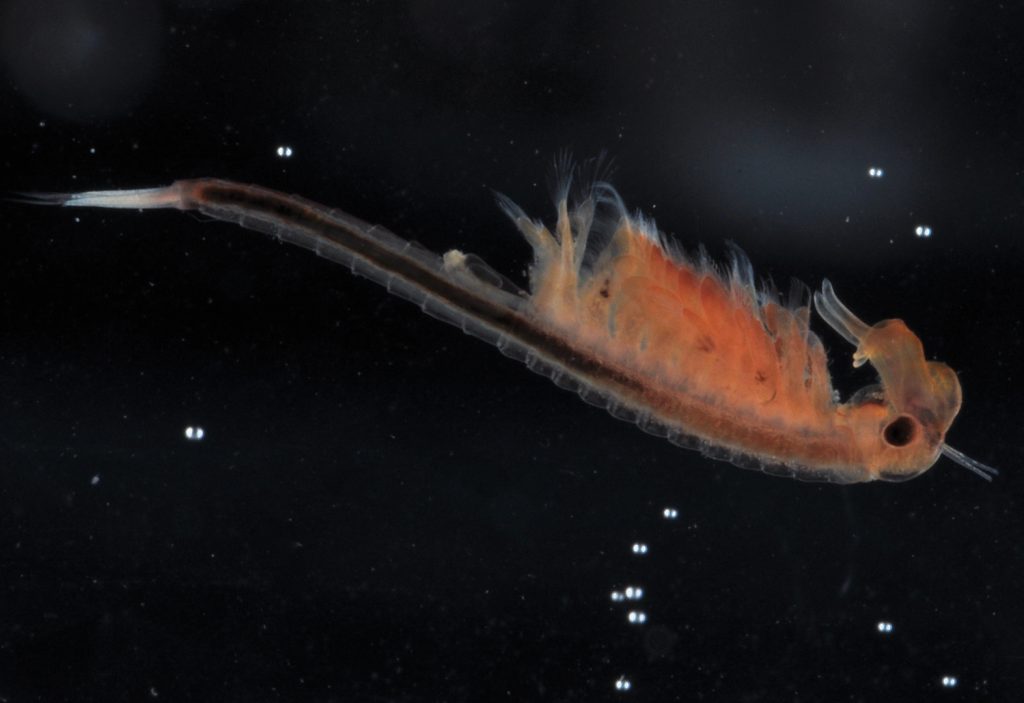I wait with anticipation for this event every spring: monitoring the weather like a rabid meteorologist; trying to prognosticate and see into the near future with oracle-like prophecy. There is a helpful formula to use, though it is far from foolproof: Night time temperature over forty degrees, and rain, preferably for more than one day in a row. And warmer is better. But only if there is rain… or very wet ground. And it happens at night, though very often, they are still at it the next morning. Honestly, picking a March Madness bracket sometimes seems less complicated.
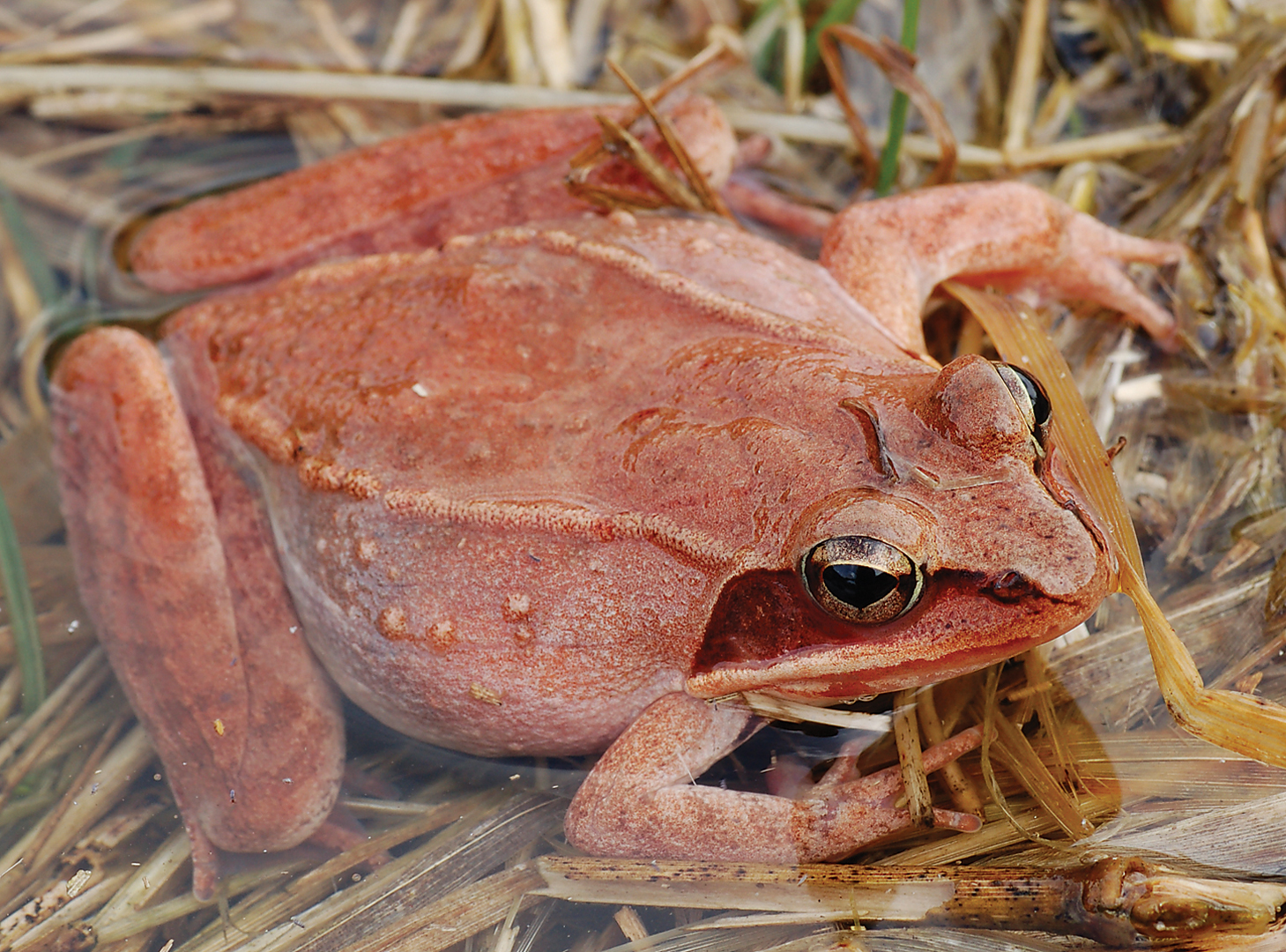
What am I waiting for?
Wood frogs and salamanders, of course. I can never decide which are my favorite. The wood frogs come first. Their skinny little bodies have just thawed out — really, a miracle of science, because they can freeze nearly solid and survive. They travel for up to a mile to congregate at the nearest vernal pool, or fish-free pond in the woods, and the males commence their singing, if you can call it that. It sounds more like dozens of tiny ducks quacking at the surface of the water. It’s apparently music to the ears of the girls, though, because within a day of this amphibian symphony, wood frog eggs appear in the pool.
Each jelly-like mass looks like a cluster of bubbles under the water, and each bubble has a single wood frog embryo. The wood frogs like to lay them communally, maybe to thwart predators, maybe to conserve heat in the event of a late freeze, or maybe they just all happen to be on the same side of the pool at the same time. Then, within days, they quietly disappear back into the woods for the rest of the year.
Not long after, or just as they are leaving, the salamanders appear. At Sharon Woods we have two species, the smallmouth and the spotted.
The smallmouths are the understated early birds, the color of mud with a haze of grey flecks on their sides. Their most distinguishing feature is… you guessed it, a rather small mouth. They appear before the spotteds, laying their small clusters of eggs in inconspicuous places about the pool.
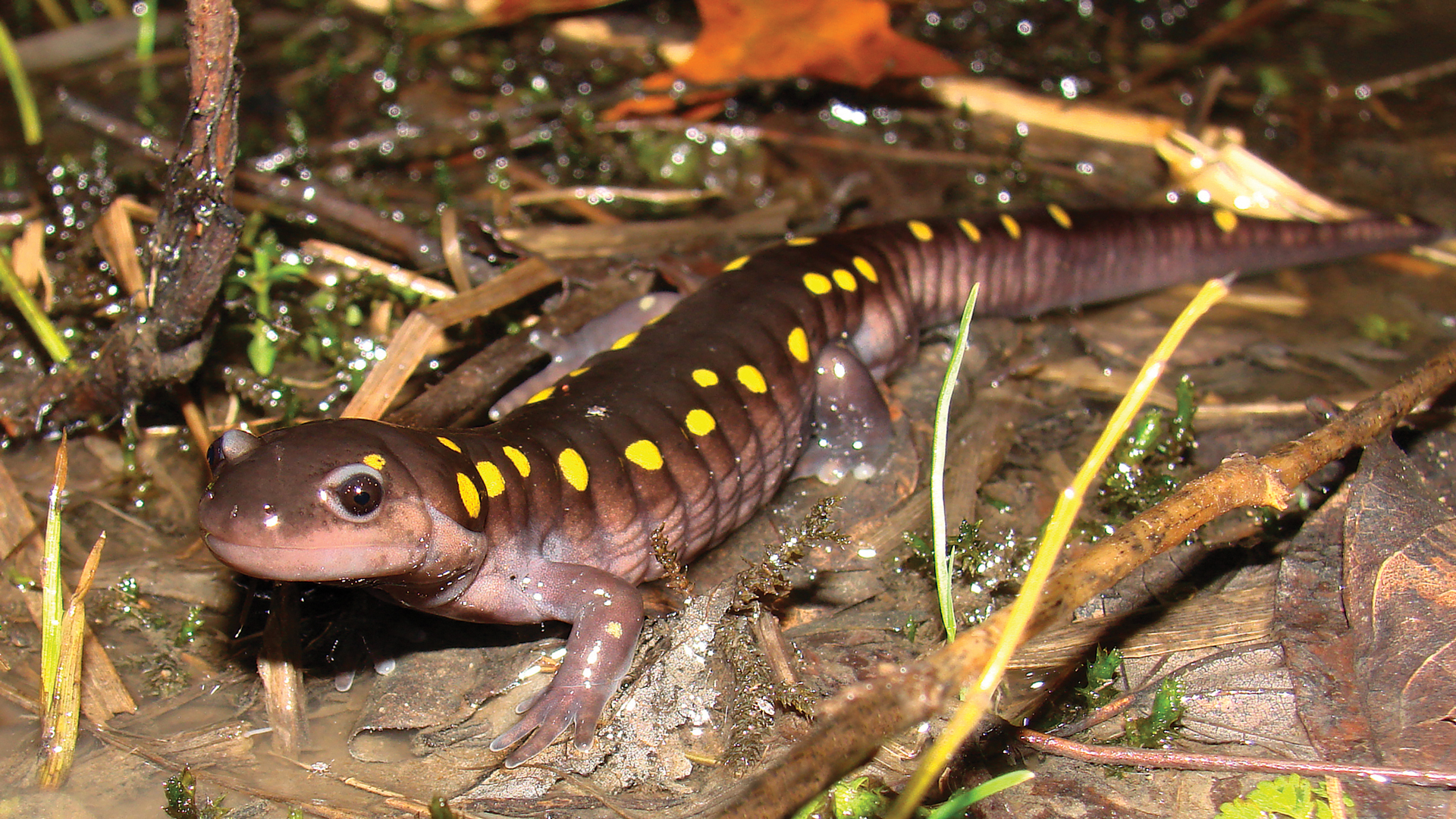
It is the spotted salamanders who “wow” you with their fancy bright yellow dots. And they may not sing, but boy, can they dance! If you arrive on the right night, when the males and females are congregating, you can observe their twisting, turning, writhing water ballet. The performance, like so many in nature, is to impress the ladies. Males nudge and nose the females, releasing chemical cues that are presumably attractive to the girls.
They also muscle other males out of the way whenever they can. By the next morning, the pool is littered with spermatophores—little while lumps left by hopeful males. Each female will choose a spermatophore (or two, or three) to fertilize her eggs, then seek out a safe-looking branch, at just the right depth under the surface, to lay her eggs. You might not notice the egg clusters at first, even though they often contain over 100 eggs, but then—Bam! They swell with water to look and feel like handfuls of milky, translucent jello. At this point they are unmistakable.
This is of course, only the beginning of the saga for this next generation of vernal pool amphibians. All of the adults—frogs and salamanders alike—will return to their forest home within a week of egg laying, leaving their offspring to fend for themselves. (Don’t worry, they are well equipped to do so.) The wood frog adults can occasionally be found in the forest throughout the summer, hunting for insects in the leaf litter. But the salamanders, well, they don’t call them mole salamanders for nothing! They head back to the safety of their underground homes until next year, probably one of the reasons a spotted salamander might live for 20 years or more. It’s their brief appearance in the early spring that makes this week feel so special to me.
The masses of eggs left in the vernal pools are now in a race against time. Because within just a few short months, some years as soon as the end of June, the pool in which they have been laid will be completely dry. It’s part of they reason their parents came here in the first place: a temporary pond means no fish to eat your eggs or babies. There are challenges to growing up in a vernal pool though—watch this blog spot and see what April brings the wood frogs and salamanders of Sharon Woods. (SEE VERNAL POOLS 2 – APRIL)
VIDEO – WOOD FROGS AT SHARON WOODS
STEPHANIE WEST
Sharon Woods Naturalist

